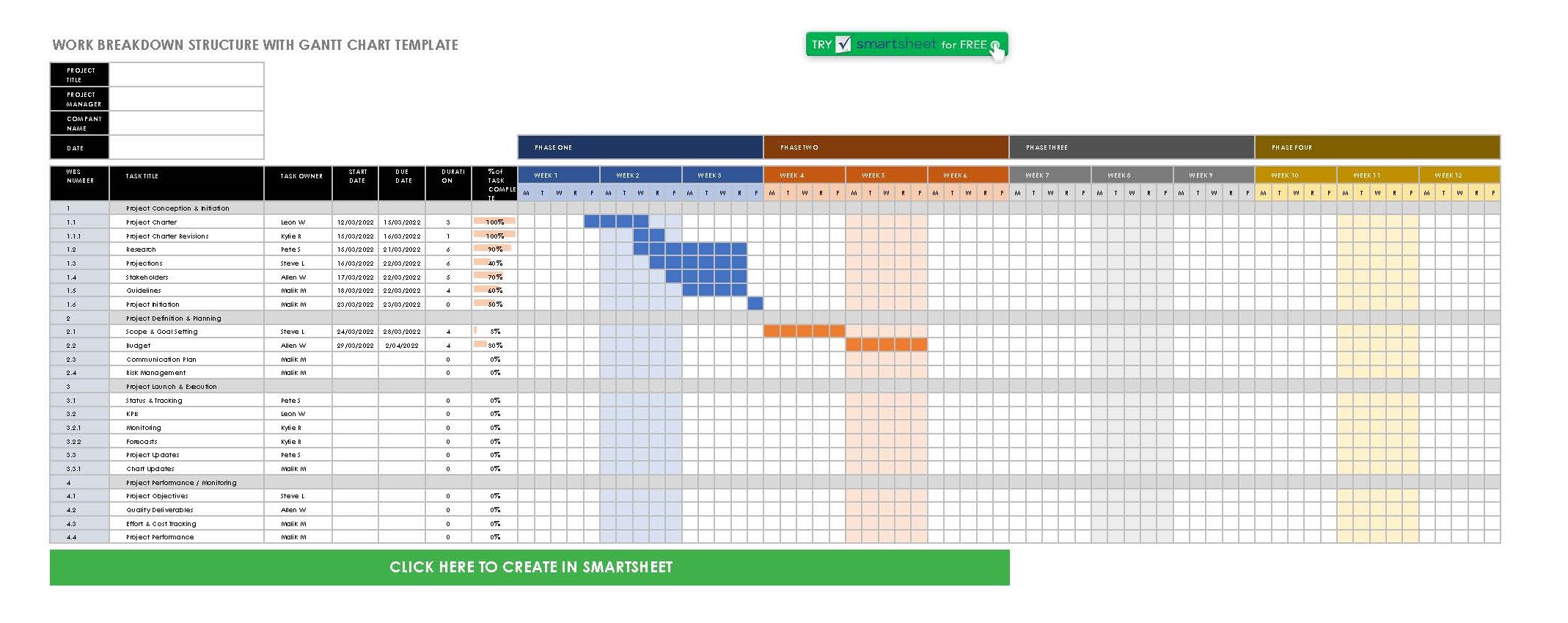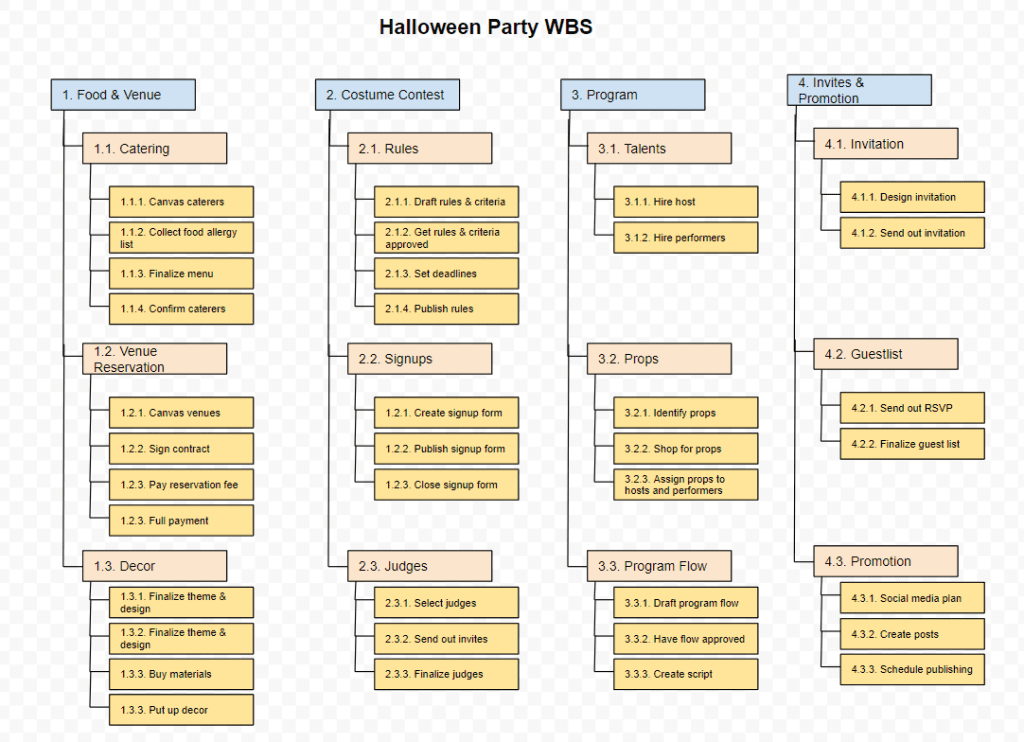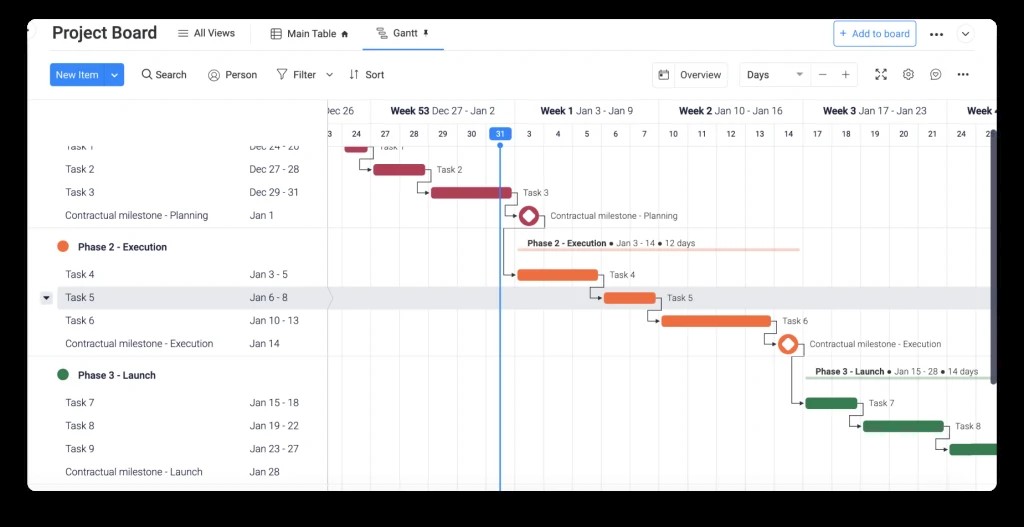Operational plans are designed to help teams or departments contribute to the achievement of the organisation’s overall goals and strategies.
In this topic, we describe the skills and knowledge required to develop and monitor the implementation of the operational plan to provide efficient and effective workplace practices within the organisation’s productivity and profitability plans.
Management at a strategic level requires systems and procedures to be developed and implemented to facilitate the organisation’s operational plan.
By the end of this topic, you will understand:
- How to explain what an operational plan is and why they are important for businesses
- The key types of plans that businesses may develop to support their organisational goals
- ‘The elements of operational plan preparation, and the steps to be taken towards developing such a plan’
- Who stakeholders are within a business, and why they are key to an organisation’s success.
An operational plan is a detailed plan used to provide a clear picture of how a team, section or department will contribute to the achievement of the organisation’s strategic goals. The purpose of the operational plan is to provide organisational personnel with a plan of what their tasks and responsibilities are in line with the strategic goals and objectives of the strategic plan.
When you sell a product or service, you must comply with fair trading regulations that ensure that trading is fair for both the business and the customers.
The Competition and Consumer Act 2010 (the Act) is a national law that regulates fair trading in Australia and governs how all businesses in Australia must deal with their customers, competitors and suppliers. The Act promotes fair trading between competitors while also ensuring that consumers are treated fairly. The Australian Competition and Consumer Commission (ACCC) administers and enforces the Act along with state and territory regulators.
The Act broadly covers:
- unfair market practices
- industry codes
- mergers and acquisitions of companies
- product safety
- collective bargaining
- product labelling
- price monitoring
- industry regulation – airports, electricity, gas, telecommunications.
Strategies outlined in operational plans must align with fair trading legislation.
There are two (2) types of operational planning:
- strategic plans
- organisational plans.
| STRATEGIC PLANS | ORGANISATIONAL PLANS |
|---|---|
|
|
Case Study
Sydney Sustainable 2030 Operational Plan
City of Sydney annually releases the Sydney Sustainable 2030 Operational Plan that is derived from the 2022-2026 delivery program.
The 2023/24 operational plan includes:
- performance indicators
- detailed budget and revenue policy, including rates, fees and charges
- projects, programs and services to be delivered
- strategic plans to show goals achieved by the operational plans.
The operational and biannual operation plan reports can be viewed and downloaded from here. Alternatively, the 2023/2024 Operational Plan can be accessed here.
Check your understanding
If you don’t know where you are going, you’ll end up someplace else.Yogi Berra

Operational vs. strategic: what’s the difference?
A strategic plan is developed to help the organisation achieve its long-term vision.
Conversely, operating plans involve the process of deciding what needs to be done to achieve the tactical objectives of the business.
Operational planning is done to support strategic planning efforts.
Let’s take a look at the difference between a strategic plan and an operational plan in more depth.
Comparing operational vs. strategic plans
Let’s compare the structures of strategic plans and operational plans:
| STRATEGIC PLANS | ORGANISATIONAL PLANS |
|---|---|
Strategic plans contain:
|
The purpose of the operational plan is to:
|
The difference between operations and strategy
A common misunderstanding in organisations is the difference between strategic planning and operational planning.
While the two are closely connected, it is important to understand how they are different and how your organisation can use both types of plans to move forward on your goals:
- A strong strategic plan serves as a roadmap to follow from where you are now, to where you want to be
- An operational plan, however, focuses on the micro or the day-to-day and weekly actions that can help your people achieve organisational goals.
Therefore, the strategy is working on your business, while operations is working in your business.Sedmak, 2019
Watch
The following 5-minute video gives an excellent explanation of how operations and strategy differ, and how they work together to achieve an organisation’s goals:
It takes as much energy to wish as it does to plan.Eleanor Roosevelt
Operational vs. strategic plans
In the following examples, you can read two (2) case studies developed by governmental organisations.
Read through the details of each to learn more about their differences and conceptualise how both plans look in action.
Example
Check your understanding
Exploring the different types of operational plans
When conducting operational planning, it is imperative to ensure your operational plan is supporting your strategic planning objectives.
Strategic plans are somewhat limited when compared to operational plans, as they predominantly focus on just a few key areas that are to be reviewed on an ongoing basis, like future vision and organisational values.
Operational plans, however, include more detailed actions, ranging from single to-do tasks, to tasks ranging from the short-, to mid- and long-term. Operational plans tend to focus directly on individual teams and departments within the organisation, allowing clearer focus on the day-to-day aspects of running the business, and there are many ways you can approach this.
In this section, we will cover the types and elements of an operational plan.
There are two (2) types of operational plans you might use within a business:
- Standing plans are made to be used repeatedly. Examples include policies, procedures and regulations.
- Single-use plans focus on a one-off project or event. An example might be a budget or a project schedule.
Methods for preparing operational plans
Strategic planning is vital in defining where the business is going in the next three to five years. With the right strategic planning models and frameworks, businesses can uncover opportunities, identify risks, and create a strategic plan to fuel their organization’s success.
There are seven (7) strategic planning models that can help during the planning phase:
1. Basic (or conventional) model
The basic strategic planning model is ideal for establishing your company’s vision, mission, business objectives, and values. This model helps you outline the specific steps you need to take to reach your goals, monitor progress to keep everyone on target, and address issues as they arise.
Best for:
- Small businesses or organisations
- Companies with little to no strategic planning experience
- Organisations with few resources
Steps:
- Write your mission statement.
- Identify your organization’s goals.
- Outline strategies that will help you reach your goals.
- Create action plans to implement each of the strategies above.
- Monitor and revise the plan as you go.
2. Issue-based (or goal-based) model
This is essentially an extension of the basic strategic planning model. It’s a bit more dynamic and popular for companies wanting to create a more comprehensive plan. It can repeat on an annual basis (or less often once you resolve the issues). It’s important to update the plan every time it’s in action to ensure it’s still doing the best it can for your organisation.
Best for:
- Organizations with basic strategic planning experience
- Businesses that are looking for a more comprehensive plan
Steps:
- Conduct a SWOT analysis, assessing your organization’s strengths, weaknesses, and opportunities.
- Identify and prioritize major issues and/or goals based on your SWOT analysis.
- Develop your main strategies that address these issues and/or goals.
- Update or create a mission and vision statement.
- Create action plans.
- Develop a yearly operational plan document. This model works best if your business repeats the strategic plan implementation process on an annual basis, so use a yearly operational plan to capture your goals, progress, and opportunities for next time.
- Allocate resources for your year-one operational plan.
- Monitor and revise the strategic plan.
3. Alignment model
This model is also called the 'strategic alignment model' (SAM) and is one of the most popular strategic planning models. It helps you align the strategic goals with the organisation’s internal operations. This involves determining the organisational goals, analysing which operations are aligned with the goals and which aren’t, and then re-working goals and internal operations so they align better.
You’ll have to consider four (4) equally important yet different perspectives when applying the alignment strategic planning model:
- Strategy execution: The business strategy driving the model
- Technology potential: The IT strategy supporting the business strategy
- Competitive potential: Emerging IT capabilities that can create new products and services
- Service level: Team members dedicated to creating the best IT system in the organization
Best for:
- Organizations that need to fine-tune their strategies
- Businesses that want to uncover issues that prevent them from aligning with their mission
- Companies that want to reassess objectives or correct problem areas that prevent them from growing
Steps:
- Outline your organization’s mission, programs, resources, and where support is needed.
- Identify what internal processes are working and which ones aren’t.
- Identify solutions in collaboration with respective teams.
- Update your strategic plan with the solutions and monitor if implementing it is setting your business up for improvement or growth. If not, you may have to return to the drawing board and update your strategic plan with new solutions.
4. Scenario model
The scenario model works great if you combine it with other models like the basic or issue-based model. This model is particularly helpful if you need to consider external factors as well. These can be government regulations, technical, or demographic changes that may impact your business.
Best for:
- Organizations trying to identify strategic issues and goals caused by external factors
Steps:
- Identify external factors that influence your organization.
- Review the worst-case scenario the above factors could have on your organization. If you know what the worst-case scenario for your business looks like, it’ll be much easier to prepare for it. Besides, it’ll take some of the pressure and surprise out of the mix, should a scenario similar to the one you create actually occur.
- Identify and discuss two additional hypothetical organizational scenarios. On top of your worst case scenario, you’ll also want to define the best case and average case scenarios. Keep in mind that the worst-case scenario from the previous step can often provoke strong motivation to change your organization for the better. However, discussing the other two will allow you to focus on the positive—the opportunities your business may have ahead.
- Identify and suggest potential strategies or solutions. Everyone on the team should now brainstorm different ways your business could potentially respond to each of the three scenarios. Discuss the proposed strategies as a team afterwards.
- Uncover common considerations or strategies for your organization. There’s a good chance that your teammates come up with similar solutions. Decide which ones you like best as a team or create a new one together.
- Identify the most likely scenario and the most reasonable strategy. Finally, examine which of the three scenarios is most likely to occur in the next three to five years and how your business should respond to potential changes.
5. Self-organizing (or organic planning) model
This model is a bit different from the linear approaches of the other models. You’ll have to be very patient with this method.
This strategic planning model is all about focusing on the learning and growing process rather than achieving a specific goal. Since the organic model concentrates on continuous improvement, the process is never really over.
Best for:
- Large organizations that can afford to take their time
- Businesses that prefer a more naturalistic, organic planning approach that revolves around common values, communication, and shared reflection
- Companies that have a clear understanding of their vision
Steps:
- Define and communicate your organisation’s cultural values. Your team can only think clearly and with solutions in mind when they have a clear understanding of your organization's values.
- Communicate the planning group’s vision for the organization. Define and communicate the vision with everyone involved in the strategic planning process. This will align everyone’s ideas with your company’s vision.
- Discuss what processes will help realize the organization’s vision on a regular basis. Meet every quarter to discuss strategies or tactics that will move your organization closer to realizing your vision.
6. Real-time model
This fluid model can help organizations that deal with rapid changes to their work environment. There are three (3) levels of success in the real-time model:
- Organisational: At the organizational level, you’re forming strategies in response to opportunities or trends.
- Programmatic: At the programmatic level, you have to decide how to respond to specific outcomes or environmental changes.
- Operational: On the operational level, you will study internal systems, policies, and people to develop a strategy for your company.
Figuring out your competitive advantage can be difficult, but this is absolutely crucial to ensure success. Whether it’s a unique asset or strength your organisation has or an outstanding execution of services or programs—it’s important that you can set yourself apart from others in the industry to succeed.
Best for:
- Companies that need to react quickly to changing environments
- Businesses that are seeking new tools to help them align with their organizational strategy
Steps:
- Define your mission and vision statement.
- Research, understand, and learn from competitor strategy and market trends. Pick a handful of competitors in your industry and find out how they’ve created success for themselves. How did they handle setbacks or challenges? What kinds of challenges did they even encounter? Are these common scenarios in the market? Learn from your competitors by finding out as much as you can about them.
- Study external environments. At this point, you can combine the real-time model with the scenario model to find solutions to threats and opportunities outside of your control.
- Conduct a SWOT analysis of your internal processes, systems, and resources. Besides the external factors your team has to consider, it’s also important to look at your company’s internal environment and how well you’re prepared for different scenarios.
- Develop a strategy. Discuss the results of your SWOT analysis to develop a business strategy that builds toward organizational, programmatic, and operational success.
- Rinse and repeat. Monitor how well the new strategy is working for your organization and repeat the planning process as needed to ensure you’re on top or, perhaps, ahead of the game.
7. Inspirational model
This model is perfect to inspire and energize your team as they work toward your organisation’s goals. It’s also a great way to introduce or reconnect your employees to your business strategy after a merger or acquisition.
Best for:
- Businesses with a dynamic and inspired start-up culture
- Organisations looking for inspiration to reinvigorate the creative process
- Companies looking for quick solutions and strategy shifts
Steps:
- Gather your team to discuss an inspirational vision for your organization. The more people you can gather for this process, the more input you will receive.
- Brainstorm big, hairy, audacious goals and ideas. Encouraging your team not to hold back with ideas that may seem ridiculous will do two things: for one, it will mitigate the fear of contributing bad ideas. But more importantly, it may lead to a genius idea or suggestion that your team wouldn’t have thought of if they felt like they had to think inside of the box.
- Assess your organization’s resources. Find out if your company has the resources to implement your new ideas. If they don’t, you’ll have to either adjust your strategy or allocate more resources.
- Develop a strategy balancing your resources and brainstorming ideas. Far-fetched ideas can grow into amazing opportunities, but they can also bear great risks. Make sure to balance ideas with your strategic direction.
Apart from the different strategic planning models outlined above, there are several strategic planning frameworks that can help during the planning phase. The most popular framework is the SWOT analysis framework.
SWOT analysis framework
A SWOT analysis is a great first step in identifying areas of opportunity and risk—which can help you create a strategic plan that accounts for growth and prepares for threats.
SWOT stands for strengths, weaknesses, opportunities, and threats. Here’s an example:
| STRENGTHS | WEAKNESSES |
|---|---|
For example: Customer service Our customer service is world-class compared to our competitors seeing as we have a Net Promoter Score (NPS) of 90. * Net Promoter Score (NPS) is a measure used to gauge customer loyalty, satisfaction, and enthusiasm with a company. It's calculated by asking customers one question: “On a scale from 0 to 10, how likely are you to recommend this product/company to a friend or colleague?” |
For example: E-commerce visibility Our website visibility is low due to our lack of marketing budget, with transitions continuing to decrease. |
| OPPORTUNITIES | THREATS |
For example: Marketing campaign In order to improve e-commerce visibility, we’ll run ads on YouTube, Facebook and Instagram. |
For example: New competition With the new e-commerce competitor set to launch within the next month, we could see a decline in customers. |
You can read about the strategic planning frameworks here.
The elements of an operational plan
Although every plan will be unique to specific businesses, there are some key elements that need to be considered. These include:
- Clear objectives
- Activities to be delivered
- Quality standards
- Key targets and key performance indicators
- Risk management plans
- Staffing, resource and budget plans
- Implementation timelines
- Monitoring and evaluation processes and plans.
Watch
Watch the following 4-minute short video from the Business Professor to dig deeper into the elements of an operational plan:
Check your understanding
Unless commitment is made, there are only promises and hopes; but no plans.Peter F. Drucker
How to prepare an operational plan
The most effective operational plans include clear and articulated objectives that relevant stakeholders within the organisation are focused on achieving. This means the operational plan should be a useful tool for everyone in the company.
It can, however, also assist you and your staff by providing encouragement to carefully consider set deadlines and actions towards achieving them.
Each department will typically have their own specific operational objectives; however, the organisation’s overall objectives will likely depend on the achievement of these department specific goals.
In this section, we will take a look at the planning process and development of an operational plan.
Six questions to ask when preparing your operational plan
Your operational plan needs to have clear and well-thought-out goals. It should clearly and explicitly state the organisation’s operational objectives.
These operational objectives should be considered as the planning steps for departments and staff to achieve your organisation’s strategic objectives.
In order to be effective, an operational plan must answer six (6) simple questions:
- WHAT?
- What must we do?
- What quality must be achieved?
- WHY?
- Why do we need to do this?
- The goal and objective
- WHEN?
- When does it need to be done by?
- Deadlines
- HOW?
- How should it be done?
- WHO?
- Who should do it?
- WHERE?
- Where will the execution take place? If offsite, for example, construction sites.
By failing to prepare, you are preparing to fail.Benjamin Franklin
The planning process
Once you have generated objectives, you can then create a plan to meet them. Each department or team must be appropriately resourced.
You should think about the following resources:
- Suppliers - who will provide you with the resources you need
- Resources - including the people, equipment and technology you might need
- Budget - how much does each department need to budget to achieve the plan.
Time is also a resource that is not unlimited.
Then, you can begin to plan.
The planning process has six (6) steps:
- Establish goals and objectives: Consider where the organisation is now, where it wants to be in the future, and how it can get there.
- Determine tasks: What are the recurring or future activities that need to be defined in order to carry out the goals?
- Sequence tasks: Determine the priority of the tasks in order based on budget, time constraints and resources.
- Communicate plan: Discuss the plan with stakeholders, including upper management and team members. Based on feedback, revise the plan until all stakeholders can authorise it.
- Implement plan: Put the plan into action.
- Monitor plan: Make adjustments to the plan if possible.
In addition to describing the production process, you should describe the operating process in detail.
Questions you should answer include:
- Where will employees be working, are the current facilities sufficient or will you need to find additional facilities?
- What schedule do you expect employees to work — will they have flexible working arrangements, or perhaps a set work schedule?
- Who is responsible for ensuring the completion of departmental objectives?
Operational plan development
When choosing the goals and objectives to include in your operational plan, keep in mind that these elements will be critical components to the entire organisation’s work moving forward.
Try to take on a broader organisational perspective, rather than developing them with a singular, more direct focus. For example, to develop your plan’s objectives, you could encourage collaboration and suggestions for improvements in your day-to-day operations, or you could hold a planning session with staff to facilitate discussion on the topic.
Sources of information
Persons who have the responsibility of preparing an operational plan will require access to extensive organisation information such as:
Watch
Watch the following 6-minute video to learn more about developing an operational plan:
Check your understanding

What is stakeholder engagement?
Stakeholder engagement is the process by which an organisation involves people who may be affected by the decisions it makes or can influence the implementation of its decisions.
Effective engagement assists to convert the needs of stakeholders into organisational objectives and develops the foundations of effective strategy development.
Finding the point of consensus or common goal assists stakeholders to come to at a decision and enables an investment in a worthy outcome.
In this section, we will look at the steps to take to collaborate with stakeholders.
Who are stakeholders?
Stakeholders can be categorised as internal and external stakeholders. Internal stakeholders include employees, managers and board of directives; external stakeholders, for example, include customers, suppliers, project sponsors, government, community, media, etc. They have a vested interest in the operational plan being carried out.
To create an effective operational plan, it is important to understand what kind of role the stakeholders play in planning and why they have a stake.
The following are the steps for effective stakeholder engagement:
- First, identify the stakeholders. Are they customers, managers, and departments?
- Figure out why this plan is important for their goals.
- Consult with stakeholders through interviews, brainstorming and surveys.
- Once goals and objectives have been identified, continue to meet periodically with stakeholders to identify activities.
How to align with stakeholders
Effective engagement helps translate stakeholder needs into organisational goals and creates the basis of effective strategy development.
Discovering the point of consensus or shared motivation helps a group of stakeholders to arrive at a decision and ensures an investment in a meaningful outcome.
Without internal alignment, you cannot build an effective strategy or implement change.
Consultation with stakeholders can occur through formal and informal communication channels, such as open meetings, surveys, focus groups, invitation for written feedback, or casual conversations with stakeholders regarding the different aspect of the operational plan.
Watch
Watch the following 5-minute video to learn more about engaging stakeholders:
Plans are of little importance, but planning is essential.Winston Churchill
There are four (4) key steps to effective engagement:
- Ensures all personnel who will influence the outcomes, or be affected by them, the opportunity to voice their opinions
- Allows for transparency and a sense of community through a shared vision for the organisation
- Provides clarity around the key stakeholders to the organisation, and allows these stakeholders to better understand their position in relation to the organisation’s goals.
Check your understanding
How to identify key tasks for operational planning
Project success, particularly on a team level, occurs after you set up a good operational plan.
Since operational plans are intended to allocate funds, resources and staff for each one- to three-year time period, all the steps that an operational plan entails should ultimately serve that purpose.
There are a few different tools, resources and guidance that can help you to identify and plan tasks for success.
In this section, we will look at how to manage project tasks and the tools that can be used for organising the project tasks.
Managing project tasks
Once the goals and objectives have been defined, it is time to identify the plan tasks.
Plan tasks are parts of work that add up to the larger project goal.
The steps to identifying and organising project tasks are:
- Identify individual tasks to reach those objectives.
- Break down tasks into smallest possible task.
- Allocate a time to each of the tasks.
- Sequence the tasks in order of priority.
There are two (2) helpful tools for organising plan tasks:
- Work Breakdown Structure (WBS)
- Gantt Chart.

Work Breakdown Structure (WBS)

A WBS is a tool that helps break the project work down into smaller tasks.
Watch
Watch the following 11-minute video to learn more about Work Breakdown Structure:
Resource
Here is a link to some WBS templates for further learning and your reference.
Gantt Chart

A Gantt Chart can also be used to organise plan tasks, especially if it is a large plan and if a time schedule needs to be included.
A Gantt chart can help to:
- Break down tasks for a large plan
- Sequence tasks
- Allocate time to each of the tasks
- Assign resources to each task.
Watch
Watch the following 5-minute video to learn more about the differences between a WBS and a Gantt Chart:
Resource
Here is a link to download a Gantt Chart template.
Planning is bringing the future into the present so that you can do something about it now.Alan Laekin
Use the following questions to check your knowledge. You can check the correct answer by clicking on the 'Answer' button:
Q1. What is the difference between strategic and operational plans?
Q2. What are the six (6) steps of developing an operational plan?
- Establish goals and objectives
- Determine tasks
- Sequence tasks
- Communicate plan
- Implement plan
- Monitor plan
Q3. What are the four key steps in effective stakeholder engagement?
- First, identify the stakeholders. Are they customers, managers, and departments?
- Figure out why this plan is important for their goals.
- Consult with stakeholders through interviews, brainstorming and surveys.
- Once goals and objectives have been identified, continue to meet periodically with stakeholders to identify activities.
Q4. What is the purpose of a Gantt chart?
A Gantt Chart can also be used to organise plan tasks, especially if it is a large plan and if a time schedule needs to be included.
A Gantt chart can help to complete the following:
- Break down tasks for a large plan.
- Sequence tasks.
- Allocate time to each of the tasks.
- Assign resources to each task.
Q5. True or false:
The Work Breakdown Structure (WBS) includes time estimates for each task so that progress can be monitored.
False. Here's why:
- While the WBS provides a visual representation of the project scope and its component parts, it typically does not include time estimates for each task. The WBS is more focused on breaking down the project into manageable and logical pieces, helping to organize and define the total scope of work.
- Time estimates for each task are usually associated with a project schedule, often created separately using tools like Gantt charts or project management software. The project schedule specifies when each task is expected to start and finish and is typically based on additional planning and estimation efforts beyond what is captured in the WBS.
